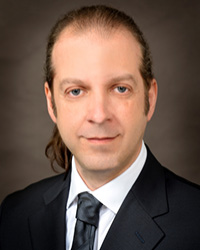Claudio Nidasio interviews Matteo Leoni
In 2017 two innovative schools were held in Trento to educate students and researchers about entrepreneurship and technological transfer in the field of raw materials for energy and of materials defined as “critical” due to their economic importance and the risks linked to their supply at a European level.
The SETI Summer School, held in September, was attended by 39 students from the University of Trento and other institutions in Europe, while the TOPSTARS Winter School, which ran in November, attracted 55 young researchers of 19 nationalities. The two schools, which took place at the CLab Trento (Contamination Lab Trento), are part of the KIC EIT Raw Materials, a European network of industries, universities and research centres, which is funded to stimulate innovation in the raw materials sector and to improve their extraction, recycling, reuse and substitution in manufacturing.
Both initiatives were promoted and organized by the University of Trento in conjunction with the Trentino Innovation Hub (HIT), and with the collaboration of international academic partners such as KU Leuven, the National Technical University of Athens and the University of Bordeaux.
The departments involved in the two initiatives are the Department of Industrial Engineering (DII), particularly Professors Massimo Pellizzari and Alessandro Pegoretti; and the Department of Civil, Environmental and Mechanical Engineering (DICAM), in particular Professor Matteo Leoni, coordinator of the two projects. We asked him a few questions about the schools.
Professor Leoni, the aim of the two schools was to train students in innovation and entrepreneurship in the raw materials sector. Can you tell us about the content and the format of the Schools?
 Both schools used an innovative approach to teaching, which has been used at UniTrento in other fields and is based on getting students actively involved. There are some lectures, as in a traditional course, but unlike traditional courses the students put what they have learned into practice immediately on a real problem. At the beginning of the school, selected companies present real industrial problems that are related to the raw materials chain (e.g. minerals) and that require innovative solutions. During the school the participants work on these problems in teams to find solutions that are valid both technically and economically. It’s a bridge between the more theoretical and methodical approach learnt at university and the needs of business. The students learn to understand that not all ideas and solutions are equally viable on the market.
Both schools used an innovative approach to teaching, which has been used at UniTrento in other fields and is based on getting students actively involved. There are some lectures, as in a traditional course, but unlike traditional courses the students put what they have learned into practice immediately on a real problem. At the beginning of the school, selected companies present real industrial problems that are related to the raw materials chain (e.g. minerals) and that require innovative solutions. During the school the participants work on these problems in teams to find solutions that are valid both technically and economically. It’s a bridge between the more theoretical and methodical approach learnt at university and the needs of business. The students learn to understand that not all ideas and solutions are equally viable on the market.
Both projects saw the involvement of innovative local companies that brought along industrial challenges. How was the collaboration between businesses and participants organized?
Companies are among the main users of the University. We develop the innovators and managers of tomorrow. Unfortunately when local companies, especially smaller ones, have a problem or can see opportunities for growth through innovation, they don’t always have the financial or technical means to do it themselves or through a collaboration with the University. The two schools aimed to fill this gap, using funding from EIT Raw Materials to allow several companies to have their problems heard and to provide them with the possible innovations that they need. It’s difficult to convince companies that a group of students can manage in just a week to come up with a solution to their technical problems, but three local companies (Frenotecnica, SolidPower and La Galvanica Trentina) believed it was possible, and found for themselves that the approach works, and that the solutions found are innovative and adoptable. We are always looking for more companies that would like to go down the same path.
One of the expected results was the development of technological solutions for potential new businesses in response to industrial challenges. How well did the students do at identifying new technologies?
The students amazed both the companies and themselves. Starting from nothing, in just a few days they understood the potential of working in a team and the need to bring together a range of different skills to resolve complex problems. Each student was invited to think of a possible solution for the challenges posed by the companies. Some presented their ideas publicly, to stimulate the others to think of alternatives or of ways to develop these seeds of innovation. A vote was used to select the most plausible ideas for teams to then develop into concrete business proposals. The teams worked independently and in competition with each other. We managed, on a small scale, to go through the design and development process that takes innovations from a technical idea to a business proposal. This is the real outcome of the schools: to have contributed to awakening a passion in people (some worked all night to achieve their goals), to have pushed them to think outside the box and to think laterally, to work in a group by finding a common language, and to see a problem from different perspectives, including financial.




